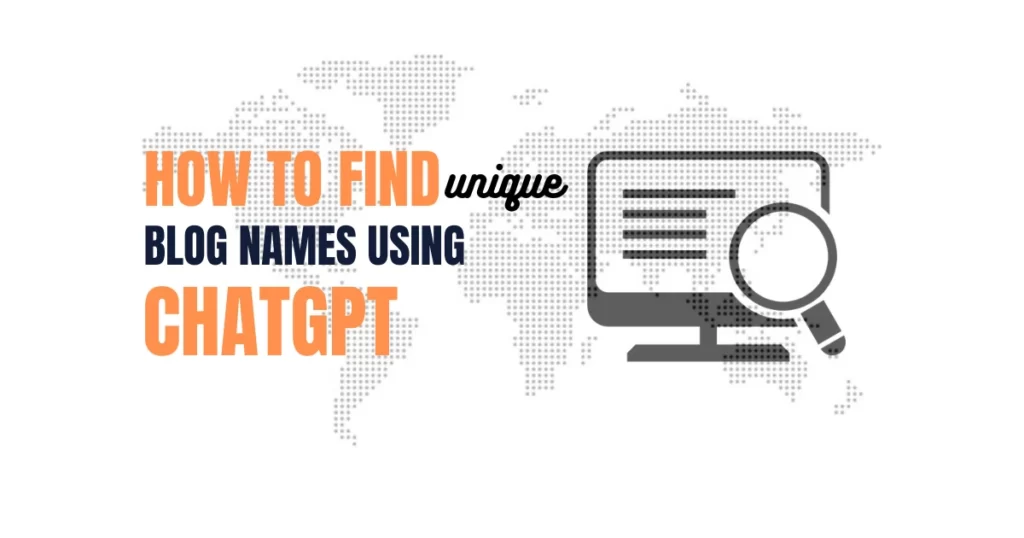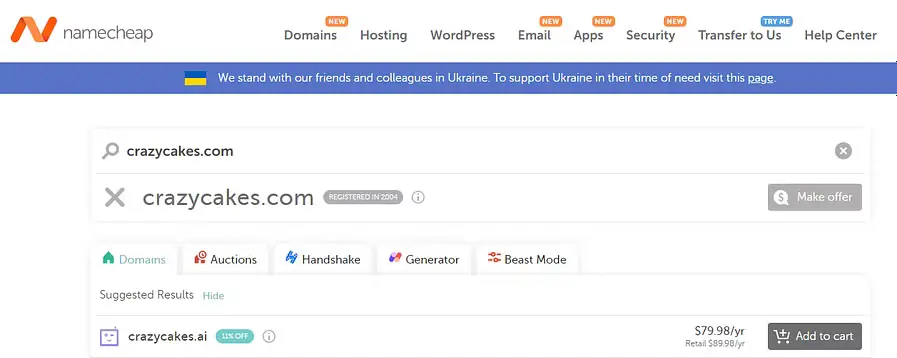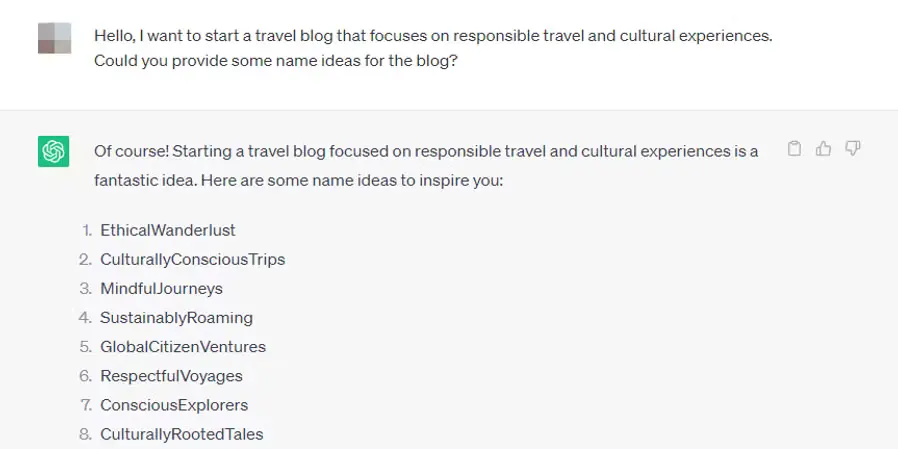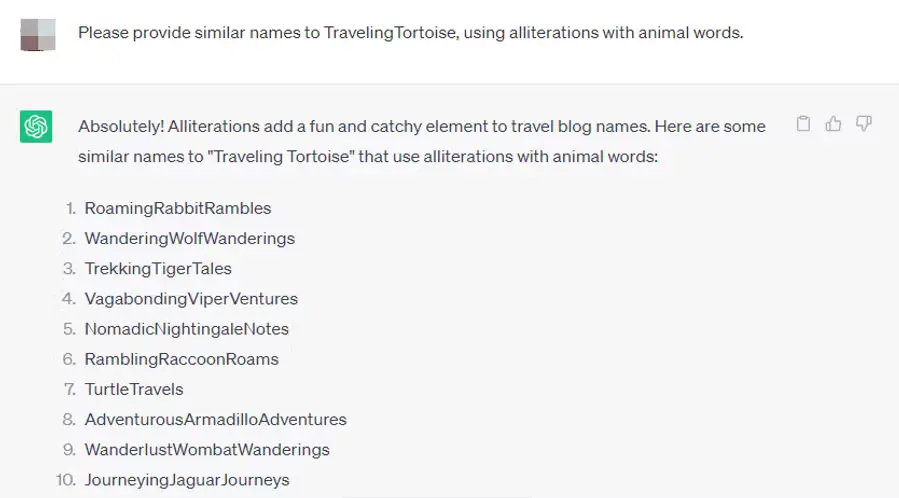
Finding a name for your new blog can be a little challenging. You’ll need to make sure that it reflects your niche, doesn’t already exist, and is memorable. Therefore, you might be wondering how to find unique blog names using ChatGPT to simplify your search.
To help you get started, we’ve created a guide to using this popular AI tool to identify the perfect blog name. Once you know how to phrase your prompts and ask for the right information, you should be able to find a name that you’re happy with.
In this post, we’ll start by highlighting a few things to keep in mind when using ChatGPT for blog names. Then, we’ll show how to find the right name with the tool and discuss a few best practices. Let’s dive right in!
What you need to know about using ChatGPT for blog names
You’ve probably heard of ChatGPT. This AI tool has taken the world by storm in recent months, helping professionals in different industries streamline their workflows.
For bloggers, ChatGPT can be useful in a variety of ways. For example, it can help you brainstorm topic ideas, find keywords, and generate outlines for your posts.
But before you do all that, you’ll need to find a name for your blog. Even here, ChatGPT can be a good source of inspiration.
For instance, if you ask it to list ten name ideas for a food blog, it will do just that:

You could even ask it to provide names that meet certain criteria or contain specific words. However, you’ll still need to do some research on your end.
For starters, you have to make sure that the names aren’t already taken. You can do this by running a search on domain name registrars like Namecheap:

Additionally, you’ll want to ensure that the blog name you choose isn’t too similar to existing blogs. Otherwise, it will be a struggle to make your site stand out and attract readers.
Note that, at the time of writing, ChatGPT can only pull data prior to 2021. Therefore, if you ask it to suggest blog names that don’t already exist, it won’t take into account any domains that were registered after that year.
How to find unique blog names using ChatGPT
Now, let’s look at how to find unique blog names using ChatGPT in three steps. We’ll show you how to compose your prompts and explore more ideas based on the tool’s input.
Step 1: Describe your blog 
First, tell ChatGPT what your blog is about. You don’t need to go into a lot of detail at this point. You can simply mention your niche and the main topics you will cover in your blog, then ask the tool to suggest ideas based on that information.
For example, you might be looking for name ideas for a travel blog that focuses on responsible travel and cultural experiences:

Let’s look at another example. This time, we told ChatGPT that the mission of the blog is to help people manage their finances. As a result, it provided the following suggestions:

In both cases, ChatGPT listed names with words that reflect the niche or topic of the blog. For the responsive travel blog, we had names like “SustainablyRoaming” and “EthicalWanderlust,” while for the personal finance blog, it gave us names like “SavvyFinanceTips” and “BudgetNinjaBlog.”
Of course, you might not find a name that you’re happy with straight away. You could ask ChatGPT to provide more ideas for your niche, or else add more requirements to your prompt.
Step 2: State your requirements 
So far, we’ve looked at how to compose a basic prompt to find unique blog names using ChatGPT. However, you might also want to state your requirements.
For instance, you might ask the tool to suggest names that contain particular words. To give you an example, we instructed ChatGPT to provide a list of travel blog names with animal vocabulary:

It gave us results such as “TravelingWolfPacks” and “AdventuresOfTheTravelingHerd.” We felt that these name ideas were a bit long and wordy, so we asked ChatGPT to suggest names with a maximum of two words:

This time, it gave us options such as “WildWanderlust” and “TravelingTortoise.” These are shorter and more memorable than the previous suggestions.
Feel free to give the tool as many requirements as needed. Also, you don’t need to restart your prompt from the beginning – ChatGPT will build on the previous prompts in the same session.
For example, if you ask it to provide ideas for a food blog on healthy eating, you don’t need to describe your blog again when submitting prompts with additional requirements. Instead, you can simply say something like “Suggest two-word names only” or “I need names that contain fruit vocabulary.”
Step 3: Pick the best names and ask for similar suggestions 
Now, let’s say ChatGPT has suggested a few names that you like. However, before you make a final decision, you’d like to explore similar names.
For example, we liked the name “TravelingTortoise” from our previous prompt. Therefore, we’ve asked ChatGPT to come up with similar ideas. In our case, we also mentioned that we’re interested in alliterations with animal words:

As you can see, ChatGPT fulfilled our request, with names like “TurtleTravels” and “TrekkingTigerTales.” Once again, you can specify a few requirements, like a maximum number of words.
For our purposes, we feel that this list provides enough inspiration. While we’re not a fan of three-word suggestions like “RoamingRabbitRambles” and “RamblingRaccoonRoams,” most of these names can easily be tweaked into shorter ones. For example, we could opt for “RoamingRabbits” or “RamblingRaccoons.”
A few tips for choosing a blog name
Finally, let’s discuss a few tips for choosing a name for your blog. Firstly, you’ll want to opt for something that’s easy to spell. Otherwise, many users may easily misspell your domain when searching for your site, resulting in lost traffic.
The trick is to use simple words and short names. Not everyone will have the patience to type something like wanderingsofacuriousaustralian.com in their search bar or know the correct way to spell Serendipitous Explorations.
Plus, it’s good to choose a name that’s easy to remember. Alliterations like “Rambling Raccoons” and “Traveling Tortoise” can be very effective in this regard.
Finally, your blog name should reflect your niche. Basically, it should tell people what your blog is about, or the type of content you write. For instance, “Mindful Journeys” hints at ethical travel, and “Wise Wallet” suggests that the blog is about money management.
As we have seen, you can easily find unique blog names using ChatGPT. And, you can use the tool to explore names that are short and memorable, and that convey your niche.
Conclusion 
ChatGPT can be a handy tool when it comes to brainstorming name ideas for your blog. However, once you find a name that you like, you’ll want to make sure that it’s available and isn’t too similar to existing domains.
To recap, here’s how to find unique blog names with ChatGPT:
- Describe your blog.
- State your requirements.
- Pick the best names and ask for similar suggestions.
Do you have any questions about finding unique blog names using ChatGPT? Let us know in the comments section below!